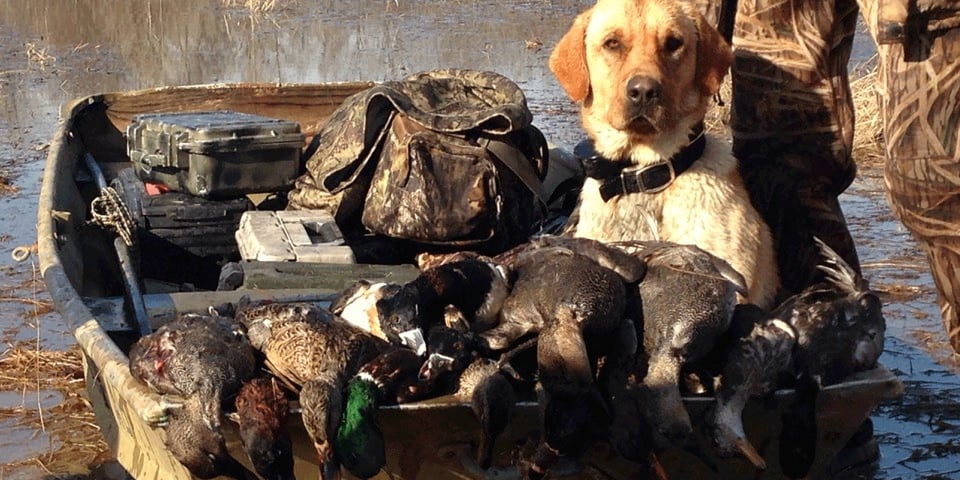Have you ever seen a hunting dog that had super retrieving skills but suddenly became schizophrenic when it came time to retrieve a duck in the water? I have.
It’s a weird thing to watch because the dog has talent, but for some reason, half the time it will launch into the water to retrieve a duck, and the other half you never know how it is going to act.
I’m not a hunting dog expert, yet when it comes to water dogs, I’ve seen enough to know that how you introduce a hunting dog to water, which is typically in the puppy phase, will be mission-critical to that retriever’s ability to serve its created purpose.
The same truth applies to how you introduce a dog to the sound of a gun [watch it now].
You've got to get this stuff right or it can hamstring your prized possession in the form of a dog that you love to hunt with ... but has trouble actually retrieving!
A water dog is a finicky creature at times, and as you know when it comes to waterfowl hunting, scenarios change with every hunt. So, you must have a hunting dog that easily adapts to a variety of situations. If your duck dog hunts a lot of flooded timber, then it will negotiate a ton of limbs and structure. If you hunt rivers, then your duck dog will negotiate current. Yet, your hunting retriever needs to walk into any situation able to handle the job.
This brings us to this conclusion: how your hunting dog responds to water has a lot to do with the way you introduce your hunting dog to water in the early stages.
Clark Kennington is known throughout the nation for his ability to build a champion hunting dog.
He is the founder of Kennington Retrievers, based in the Mississippi Delta near Grenada, Mississippi.
Today he’s going to walk you through a few keen insights on how to introduce your hunting dog to water that ensures that the experience is positive. After all, what could be more critical to training a water dog than making sure it loves water?
